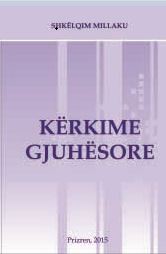Author(s): Emira Mešanović-Meša / Language(s): Bosnian
The breakup of the state of Yugoslavia in the 90s of the 20th century caused the split of the previously common standard Serbo-Croatian or Croatian--Serbian language, and therefore four language standards came into existence: the Bosnian language, the Croatian language, the Serbian language and the Montenegrin language Unlike the neighboring countries, where the official language was declared based on the majority ethnic group, in multiethnic Bosnia and Herzegovina each ethnic community accepted its national language standard Hence, official documentation in the Federation of BiH is published in three versions: the Bosnian, Croatian and Serbian languages. The subject matter of this paper is a contrastive analysis of the Bosnian,Croatian and Serbian languages in the laws of the Federation of BiH The tasks of the paper are to sort out the language differences by the grammatical levels and the lexical aspect as well, and also to determine their congruence with the codification norms of the given languages The objective of the paper is to clarify the materialization of three-language standardness in the official usage. At the phonetic level the differences have been noticed in the vowel alternations a/o, a/u, a/e, unstable a, movable (facultative) vowels, ablaut of vowels, reflex of yat, jotovanje, reduction of consonants, merging of consonants, other alternations (adaptation of some sounds in words of foreign origin – from Greek, Latin, French) and sound h The largest number of differences at the morphological level appears in the category of nouns,which is expected, because the administrative style at the grammar level is a nominal one The differences have been made in the gender of nouns,in the usage of the insertion -ov-/-ev- in plural of the noun put (road), and the biggest differences are in the formation of substantives In the category of adjectives all differences refer to their formation, and the most frequent incongruity is in the usage of adjectivized participles ending with-iran, -ovan and -isan, and adjectives ending with -ioni and -ijski Since the administrative style is not characterized with pronouns, there is a small number of pronouns in such sources, among which the different usage of the following is in the foreground: ko and tko (who), particle -zi- in the possessive pronoun njen/njezin (her), shorter or longer form kog(a)/kojeg (whom) Just like with nouns and adjectives, the differences with verbs are associated with the endings -irati, -ovati and -isati, then to the formation of the past participle with the endings -t or -n, for instance izdat/izdan (issued). The endings of adverbs -no, -ice, -ačno, -ce appear as a distinctive feature in the sources At the syntactic level the differences in texts happen with regard to the word order, the usage of infinitive or construction da +present, nominal predicate, conjunctions and adverbial expressions.
More...



















